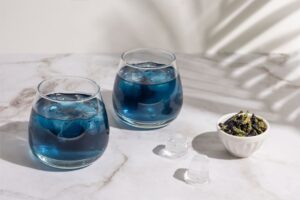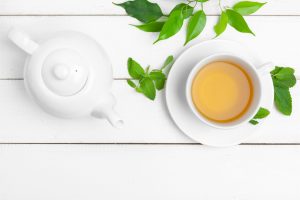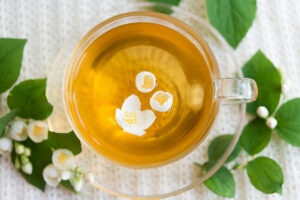There’s no other herbal tea quite like the Butterfly Pea Tea. This beautifully blue, and sometimes color-changing tea has captured the hearts of many. Its visually appealing (or shall we say, instagrammable) aspect definitely plays a huge part. Today, butterfly pea tea can be found in boba shops and plenty of restaurants.
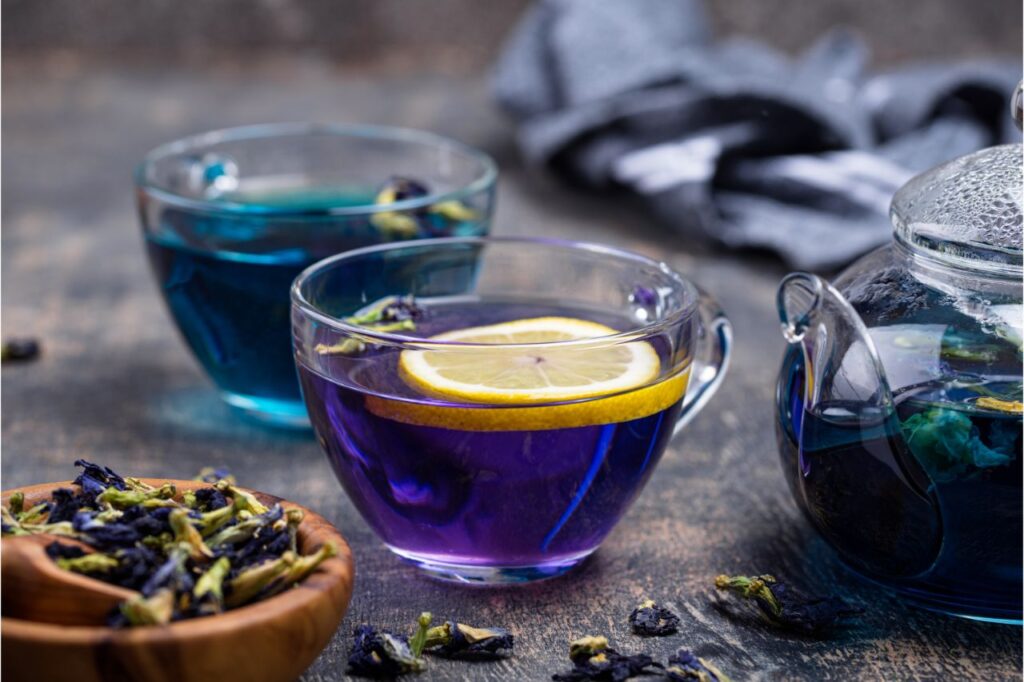
But, you might be wondering, what does it really taste like? Is it actually delicious, and not just another trendy drink?
Butterfly pea tea is a tasty and pleasant beverage. It has a delicate floral and earthy flavor profile, similar to green tea. So if you find the taste of green tea too powerful, this can be an excellent option. It also holds many great benefits that will make you want to drink it daily.
In this post, we break down everything you need to know – from its flavor profile to its benefits, read more below!
What Is Butterfly Pea Tea?
This tea comes from steeping the butterfly pea tea flower – Clitoria ternatea plant. This flower has been around for centuries. It’s been long loved in traditional Chinese medicine and Ayurveda.
Other common names for it include blue pea, blue tea, or pigeonwings. It has a deep vibrant blue color and looks very beautiful when in bloom.
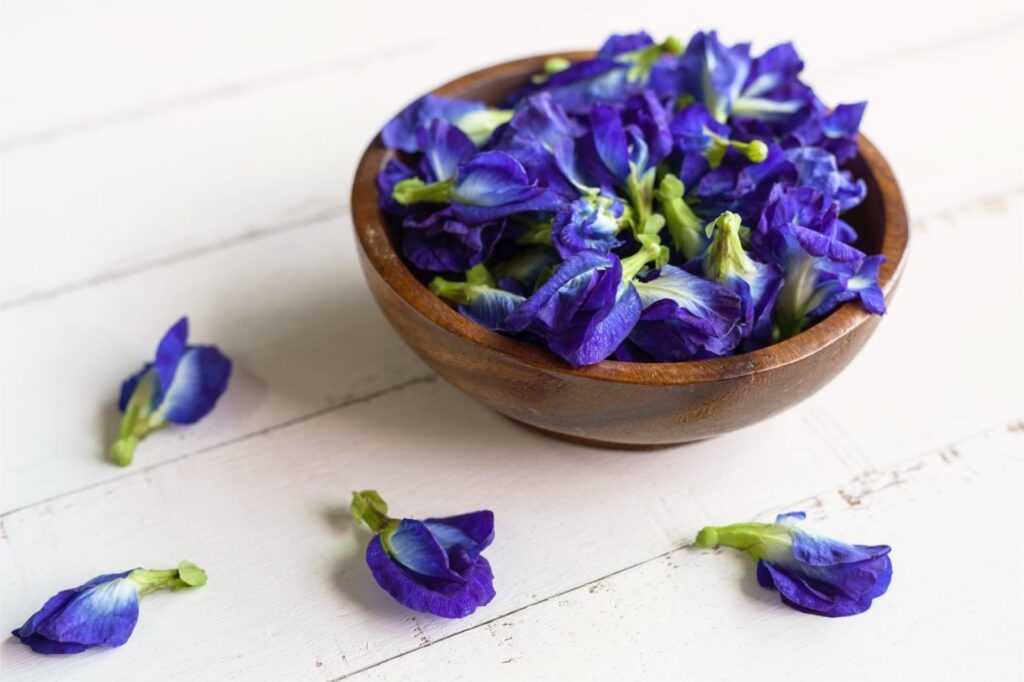
It’s a traditional remedy for a variety of ailments including inflammation, pain, brain health, and ocular disorders.
On top of this, it’s also a widely used ingredient in Southeast Asia. For instance, it gives rice dishes like nasi kerabu their blue color. Some also use it as a natural hair and clothing dye.
What Does Butterfly Pea Tea Taste Like?
In its simplest form, brewed butterfly pea tea isn’t strong in flavor. It’s faintly woody with an earthy taste.
As we mentioned, it’s like a very mellow and light green tea. And unlike rose teas, it doesn’t have a strong flowery scent either.
Some tea brands add some fragrance to their dried tea leaves to make them aromatic. It is also included in many recipes and drinks from lemonade to boba, to coconut lattes. Most of these contain sweeteners and creamers.
All the colors and new ingredients melded together make it an enjoyable and fun drink to sip on!
Why Is Butterfly Pea Tea Blue?
Some might wonder, does butterfly pea tea have food coloring? No, it doesn’t. The flower gives off its natural blue tint when brewed.
Scientifically speaking, the plant contains a phenolic compound known as anthocyanins. This is what lends it its color, and also its health benefits.
Why Does Butterfly Pea Tea Change Colors?
Perhaps the most fun and awaited part of this tea is its color-changing aspect. Some ingredients can alter the tea’s PH balance, resulting in a color shift.
Take the famous lemonade blue teas, for instance. Adding fresh lemon or lime juice to the mix will instantly make the drink purple. And increasing its acidic content further will make it pink! Pretty cool, isn’t it? It allows for many creative drink possibilities.
The Benefits Of Butterfly Pea Tea
Aside from its color, why else would people want to drink butterfly tea? Well, it’s packed with healthy components and benefits. Here’s why you should be adding it to your list of teas!
A Source Of Antioxidants and Anti-Inflammatory Properties
Ternatins, found in Butterfly Pea blossoms, are a potent source of anti-inflammatory antioxidants. This includes the following:
- Kaempferol – known for combating cancer cells
- P-coumarin acid – can fight infection and diseases
- Delphinidin-3,5-glucoside – can boost immune function
Can Help With Brain Function
Ayurvedic medicine considers the Butterfly Pea flower to be a good brain herb. They’ve used it for ages to treat a wide range of mental health issues. This includes Alzheimer’s and depression.
So, drinking a cup daily may lend you some brain health benefits.
Acetylcholine is the primary molecule responsible for these benefits. This compound can aid memory and keep the brain healthy.
Studies have shown that drinking butterfly pea tea decreases the signs of stress-induced sores. Moreover, it can help alleviate the symptoms of a variety of brain-related diseases.
May Help With Eye Health
Anthocyanin also lends some eye health-boosting properties. Some studies show that it can increase blood flow and circulation in the eyes. This can help aid glaucoma, blurry vision, retina damage, and eye fatigue. Some studies also show its capability to improve night vision.
Helps With Reproductive Health
Hippocrates once came to the conclusion that women’s health was conducive to the physical qualities of this plant. Clitoria ternatea gets its name from the fact that it resembles a female clitoris in appearance.
Butterfly Pea tea has been shown to be an effective cure for a variety of ailments. This includes vaginal discharge, low sperm production, and childbirth.
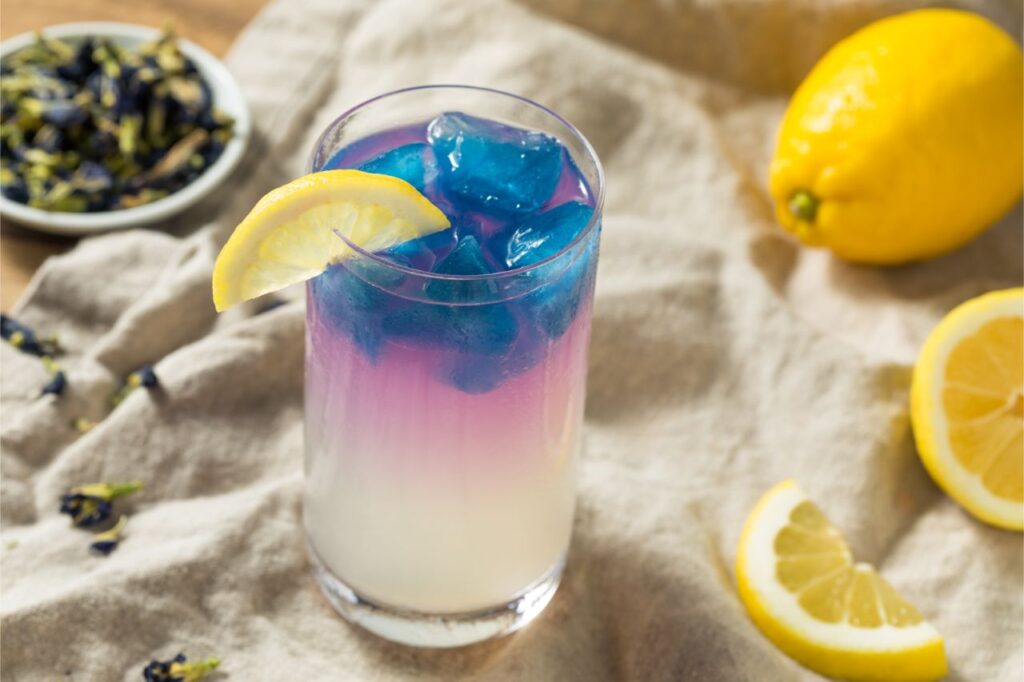
Better Aging
Oxygen enters our bodies from the environment, food, and other exposures throughout our lifetimes. Free radicals, which are unpaired electrons, enter your bloodstream as a result of this process. When these electrons remain unpaired, it might hasten aging. Plus, it can raise one’s risk of developing health problems.
Antioxidants aid in the control and elimination of free radicals throughout the body. Butterfly pea blossoms have several antioxidants. It has also shown potential in certain recent research for skincare products.
But, of course, you shouldn’t use this as an alternative to medicine. These benefits also won’t take into effect drastically. And if you have any health concerns, consult your doctor before consumption.
Are There Side Effects To Drinking Butterfly Pea Tea?
Nutritionists usually regard butterfly pea tea is safe for everyone. However, there have been instances of adverse effects like:
- Nausea
- Diarrhea
- Stomach aches
- Allergic reactions
- Reaction to prescribed and over-the-counter medications
So, if you have allergies or have a sensitive stomach, it’s best to consult your doctor first. The same should be done for pregnant and breastfeeding mothers.
You should also talk to your doctor first if you’re undergoing any treatment or medication.
If it’s your first time drinking, slowly sip on your cup. This will help you experience its flavor. And in the case that you really enjoy the tea, drink it in moderation. Remember, overconsumption of tea, or anything for that matter is not great for you either.
Does Butterfly Pea Tea Contain Caffeine?
No, it does not! Butterfly pea tea is not a true tea. It is herbal tea. So, it does not come with any caffeine.
It may contain caffeine in tea mixtures and tea blends, though. But, alone, it does not naturally contain caffeine.
Therefore, it’s a great tea to drink for those trying to cut down on caffeine.

Where To Find Butterfly Pea Tea
Want to try butterfly pea tea? There are multiple ways you can get a hold of the flower and the drink.
You can actually grow your own Butterfly Pea Tea plant at home. This will also save you more in the long run. It’s a relatively fast-growing and not-so picky plant, too.
Get yourself some seeds, plant them, and wait for them to bloom. This way, you get to drink fresh butterfly pea tea any time you want. You can additionally make your own version of the color-changing lemonade!
If you want to buy the tea, then you’ll most likely get a hold of the dry tea leaves. As we stated earlier, some stores can sell it as a tea mix or with fragrance.
So, if you’re meticulous with the caffeine content and other additives, read the ingredients list first.
But, if you just want the simple plain dry tea leaves, look for pure and organic versions.
You can also find butterfly pea tea in online tea stores or in Amazon.
Now, if you’re up for some fun and want to taste creative flavors, then visit your local tea shops. Some boba stores offer butterfly pea tea with different flavor variations.
Butterfly Tea Key Takeaways
Butterfly pea tea is more than just a trendy, colorful, picturesque drink. It’s also packed with antioxidants and other health-boosting benefits.
On top of that, it’s also naturally free of caffeine. So, if you’re looking for caffeine-free tea, you might want to try it out.
Happy sipping!



